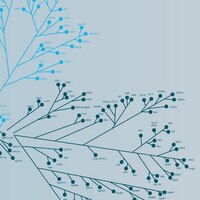Inhibition of mixed lineage kinase 3 attenuates MPP+-induced neurotoxicity in SH-SY5Y cells.
Mathiasen, Joanne R, et al.
Brain Res., 1003: 86-97 (2004)
2004
Show Abstract
The neuropathology of Parkinson's Disease has been modeled in experimental animals following MPTP treatment and in dopaminergic cells in culture treated with the MPTP neurotoxic metabolite, MPP(+). MPTP through MPP(+) activates the stress-activated c-Jun N-terminal kinase (JNK) pathway in mice and SH-SY5Y neuroblastoma cells. Recently, it was demonstrated that CEP-1347/KT7515 attenuated MPTP-induced nigrostriatal dopaminergic neuron degeneration in mice, as well as MPTP-induced JNK phosphorylation. Presumably, CEP-1347 acts through inhibition of at least one upstream kinase within the mixed lineage kinase (MLK) family since it has been shown to inhibit MLK 1, 2 and 3 in vitro. Activation of the MLK family leads to JNK activation. In this study, the potential role of MLK and the JNK pathway was examined in MPP(+)-induced cell death of differentiated SH-SY5Y cells using CEP-1347 as a pharmacological probe and dominant negative adenoviral constructs to MLKs. CEP-1347 inhibited MPP(+)-induced cell death and the morphological features of apoptosis. CEP-1347 also prevented MPP(+)-induced JNK activation in SH-SY5Y cells. Endogenous MLK 3 expression was demonstrated in SH-SY5Y cells through protein levels and RT-PCR. Adenoviral infection of SH-SY5Y cells with a dominant negative MLK 3 construct attenuated the MPP(+)-mediated increase in activated JNK levels and inhibited neuronal death following MPP(+) addition compared to cultures infected with a control construct. Adenoviral dominant negative constructs of two other MLK family members (MLK 2 and DLK) did not protect against MPP(+)-induced cell death. These studies show that inhibition of the MLK 3/JNK pathway attenuates MPP(+)-mediated SH-SY5Y cell death in culture and supports the mechanism of action of CEP-1347 as an MLK family inhibitor. | 15019567
 |
The MLK family mediates c-Jun N-terminal kinase activation in neuronal apoptosis.
Xu, Z, et al.
Mol. Cell. Biol., 21: 4713-24 (2001)
2001
Show Abstract
Neuronal apoptotic death induced by nerve growth factor (NGF) deprivation is reported to be in part mediated through a pathway that includes Rac1 and Cdc42, mitogen-activated protein kinase kinases 4 and 7 (MKK4 and -7), c-Jun N-terminal kinases (JNKs), and c-Jun. However, additional components of the pathway remain to be defined. We show here that members of the mixed-lineage kinase (MLK) family (including MLK1, MLK2, MLK3, and dual leucine zipper kinase [DLK]) are expressed in neuronal cells and are likely to act between Rac1/Cdc42 and MKK4 and -7 in death signaling. Overexpression of MLKs effectively induces apoptotic death of cultured neuronal PC12 cells and sympathetic neurons, while expression of dominant-negative forms of MLKs suppresses death evoked by NGF deprivation or expression of activated forms of Rac1 and Cdc42. CEP-1347 (KT7515), which blocks neuronal death caused by NGF deprivation and a variety of additional apoptotic stimuli and which selectively inhibits the activities of MLKs, effectively protects neuronal PC12 cells from death induced by overexpression of MLK family members. In addition, NGF deprivation or UV irradiation leads to an increase in both level and phosphorylation of endogenous DLK. These observations support a role for MLKs in the neuronal death mechanism. With respect to ordering the death pathway, dominant-negative forms of MKK4 and -7 and c-Jun are protective against death induced by MLK overexpression, placing MLKs upstream of these kinases. Additional findings place the MLKs upstream of mitochondrial cytochrome c release and caspase activation. | 11416147
 |
Expression of mixed lineage kinase-1 in pancreatic beta-cell lines at different stages of maturation and during embryonic pancreas development.
DeAizpurua, H J, et al.
J. Biol. Chem., 272: 16364-73 (1997)
1997
Show Abstract
Events controlling differentiation to insulin-secreting beta-cells in the pancreas are not well understood, although beta-cells are thought to arise from pluripotent ductal precursor cells. To search for signaling proteins that might be involved in beta-cell maturation, we analyzed protein kinase expression in two developmentally and functionally distinct pancreatic beta-cell lines, RIN-5AH and RIN-A12, by reverse transcriptase polymerase chain reaction. A number of tyrosine and serine/threonine kinases were identified in both lines. One protein kinase, mixed lineage kinase-1 (MLK-1), was expressed at both the RNA and protein levels in RIN-5AH cells, which display an immature beta-cell phenotype, but was not detected in the more mature RIN-A12 cells. Furthermore, levels of MLK-1 mRNA and protein were increased after brief stimulation of RIN-5AH cells with either the differentiation inducer, sodium butyrate, or with serum after serum starvation. These increases in expression were independent of phenotypic markers such as insulin secretion or surface expression of major histocompatibility class I- and A2B5-reactive ganglioside. In addition, increases in MLK-1 expression in the stimulated RIN-5AH cells were accompanied by phosphorylation of MLK-1 on serine but not tyrosine. Antisense oligonucleotides to two distinct regions of MLK-1 caused RIN-5AH cells, but not RIN-A12 cells, to adopt a highly undifferentiated morphology, with a reduction in DNA synthesis and MLK-1 protein levels and elevated glucagon mRNA levels, but with no effect on insulin mRNA. In an immunohistochemical survey of embryonic mouse tissues, we found that temporal expression of MLK-1 was regulated in a tissue-specific manner. In the embryonic pancreas, MLK-1 expression was evident in ductal cells from day 13 to 16 but was not detected in late stage gestation or neonatal pancreas. These data suggest that MLK-1 is regulated in immature pancreatic beta-cells and their ductal precursors at the level of functional maturity and may therefore play a role in beta-cell development. | 9195943
 |











